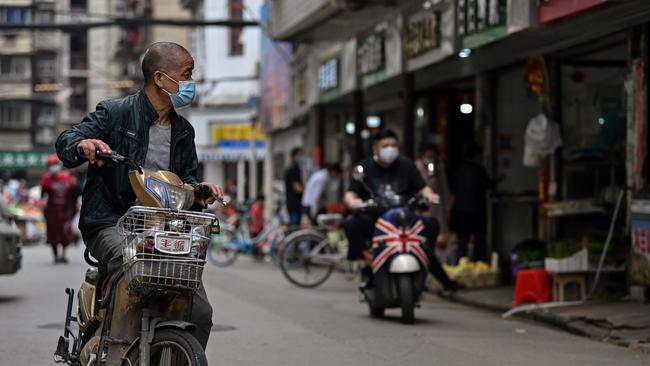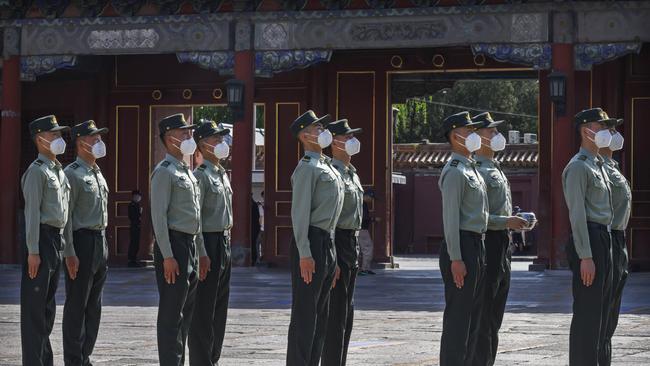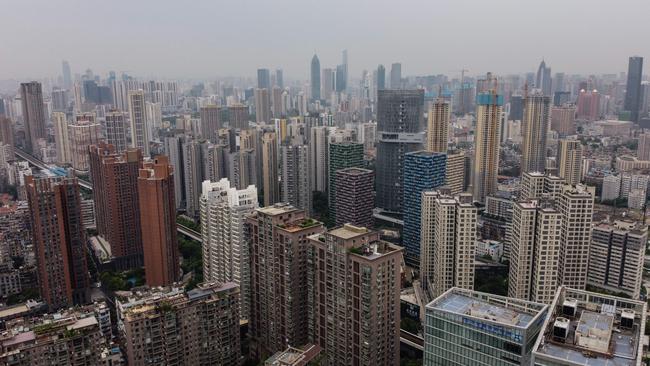Sharri Markson: Worrying practices at second Wuhan laboratory
The world has focused attention on the Wuhan Institute of Virology but the Wuhan Centre for Disease Control, which is closer to the wet market, has gone largely unnoticed in the outbreak of the virus. Its poor practices are now coming to light.
Opinion
Don't miss out on the headlines from Opinion. Followed categories will be added to My News.
- China’s risk to Aussie way of life is too great
- How China is taking strategic advantage of pandemic
- In reality, we’re united with The States on China
It’s the lower security, and lower profile, Wuhan laboratory near the now infamous wet market where exotic animals, but not bats, are for sale.
The world has focused on the Wuhan Institute of Virology and its leading scientist, Shi Zhengli, who has become famous for her risky research, genetically altering bat-derived coronaviruses.
But the Wuhan Centre for Disease Control, which is closer to the wet market, has gone largely unnoticed in the outbreak of the virus.

This is changing and it’s now becoming a site of great interest to experts and intelligence agencies analysing the spread of COVID-19.
The Wuhan Centre for Disease Control has a long history of poor safety practices.
There have been highly-concerning breaches of protocol where potentially virus-ridden bats came into direct contact with researchers not wearing protective equipment.
One senior scientist, Tian Junhua, went on the record to talk about how he was scratched, bitten and even urinated on by bats while taking samples out in the field.
“We can easily get contact with the faeces of bats which contaminate everything. So it is highly risky here. I feel the fear. The fear of infections,” he said in a video posted in December, 2019.
Does this sound like a laboratory you would entrust with the role of handling highly-pathogenic coronavirus samples?
Absolutely not.
Yet, this is where some of the earliest samples of what was then understood to be a new pneumonia-like illness may have been sent.

Matthew Henderson, director of British think-tank, Henry Jackson Society’s Asia Studies Centre, said when people first started falling ill and were hospitalised in December with an unknown virus, he believes their samples were likely sent to the Wuhan Centre for Disease Control for testing.
He expects intelligence agencies to now be having a closer look at the WCDC.
“It is extremely important. (Shi Zhengli) was called back from Shanghai on the night of 30th December to receive that evening samples that were passed on at WIV from work that had been done by the Wuhan Centre for Disease Control,” Mr Henderson said.
“(The WCDC) had been looking for some time at samples from patients taken from hospitals who had this novel coronavirus disease.”
The former British diplomat in East Asia, who spent a large part of his career in the British Foreign and Commonwealth Office, said the Wuhan Centre for Disease Control was likely also sampling the very first coronavirus in early December.
“The main work on this new virus that they’d taken samples from quite early in December, that work has not been done at the Wuhan Institute of Virology, it’s been done somewhere else. To me the obvious candidate is WCDC,” he said.

A dossier prepared by concerned western governments into China’s cover-up of coronavirus, which I reported on a month ago, stated as part of China’s “suppression and destruction of evidence” that “virus samples (were) ordered destroyed at genomics labs.”
Since then, China has admitted to destroying early samples of the virus.
But authorities said they did so only in laboratories unauthorised to handle the highly-infectious virus.
Mr Henderson said it is likely that the Wuhan Centre for Disease Control was one of the laboratories required to destroy samples that had already been sent there because it did not have the highest level 4 biosecurity authorisation.
My Sky News mini-documentary tomorrow night, that looks at the laboratories at the centre of a global probe into the origins of the virus, reveals the Wuhan Centre for Disease Control censored the search of “bats” on their website.
Presumably this is to deflect attention from any work they were doing relating to bat-sampling.

Some of this material is already in the public domain.
“A scientist there who had a long career of working on bat sampling, he boasted in the press about how he had been peed on and scratched and had blood on him and had had to self-isolate at least twice,” Mr Henderson said.
“He regarded his work as so important he was going to carry on anyway. He said on one occasion he even forgot to take his protective clothing along to do some sampling in the field.
“He was also working on lab ventures, he and his colleagues were working with samples taken from patients with COVID-19.
“If that’s the way they were doing their samples in the field, that’s the way they were treating biosecurity, it is a reasonable inference, that probably standards there were not so high.”
Accidents and leaks in laboratories are not uncommon.

A 2004 SARS outbreak was the result of safety breaches at a top Beijing virology laboratory where two young scientists were infected.
I look at the safety issues of both Wuhan biosecurity laboratories in a Sky News ‘‘special’’ tomorrow night at 7.30pm.
The repeated breaches of protocol at the labs, and the warnings that were ignored, clearly paint the picture of a bio-accident waiting to happen.
